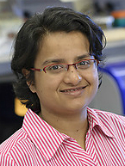Two high-risk susceptibility loci at 6p25.3 and 14q32.13 for Waldenström macroglobulinemia Journal Article
| Authors: | McMaster, M. L.; Berndt, S. I.; Zhang, J.; Slager, S. L.; Li, S. A.; Vajdic, C. M.; Smedby, K. E.; Yan, H.; Birmann, B. M.; Brown, E. E.; Smith, A.; Kleinstern, G.; Fansler, M. M.; Mayr, C.; Zhu, B.; Chung, C. C.; Park, J. H.; Burdette, L.; Hicks, B. D.; Hutchinson, A.; Teras, L. R.; Adami, H. O.; Bracci, P. M.; McKay, J.; Monnereau, A.; Link, B. K.; Vermeulen, R. C. H.; Ansell, S. M.; Maria, A.; Diver, W. R.; Melbye, M.; Ojesina, A. I.; Kraft, P.; Boffetta, P.; Clavel, J.; Giovannucci, E.; Besson, C. M.; Canzian, F.; Travis, R. C.; Vineis, P.; Weiderpass, E.; Montalvan, R.; Wang, Z.; Yeager, M.; Becker, N.; Benavente, Y.; Brennan, P.; Foretova, L.; Maynadie, M.; Nieters, A.; de Sanjose, S.; Staines, A.; Conde, L.; Riby, J.; Glimelius, B.; Hjalgrim, H.; Pradhan, N.; Feldman, A. L.; Novak, A. J.; Lawrence, C.; Bassig, B. A.; Lan, Q.; Zheng, T.; North, K. E.; Tinker, L. F.; Cozen, W.; Severson, R. K.; Hofmann, J. N.; Zhang, Y.; Jackson, R. D.; Morton, L. M.; Purdue, M. P.; Chatterjee, N.; Offit, K.; Cerhan, J. R.; Chanock, S. J.; Rothman, N.; Vijai, J.; Goldin, L. R.; Skibola, C. F.; Caporaso, N. E. |
| Article Title: | Two high-risk susceptibility loci at 6p25.3 and 14q32.13 for Waldenström macroglobulinemia |
| Abstract: | Waldenström macroglobulinemia (WM)/lymphoplasmacytic lymphoma (LPL) is a rare, chronic B-cell lymphoma with high heritability. We conduct a two-stage genome-wide association study of WM/LPL in 530 unrelated cases and 4362 controls of European ancestry and identify two high-risk loci associated with WM/LPL at 6p25.3 (rs116446171, near EXOC2 and IRF4; OR = 21.14, 95% CI: 14.40–31.03, P = 1.36 × 10−54) and 14q32.13 (rs117410836, near TCL1; OR = 4.90, 95% CI: 3.45–6.96, P = 8.75 × 10−19). Both risk alleles are observed at a low frequency among controls (~2–3%) and occur in excess in affected cases within families. In silico data suggest that rs116446171 may have functional importance, and in functional studies, we demonstrate increased reporter transcription and proliferation in cells transduced with the 6p25.3 risk allele. Although further studies are needed to fully elucidate underlying biological mechanisms, together these loci explain 4% of the familial risk and provide insights into genetic susceptibility to this malignancy. © 2018, The Author(s). |
| Journal Title: | Nature Communications |
| Volume: | 9 |
| ISSN: | 2041-1723 |
| Publisher: | Nature Publishing Group |
| Date Published: | 2018-10-10 |
| Start Page: | 4182 |
| Language: | English |
| DOI: | 10.1038/s41467-018-06541-2 |
| PUBMED: | 30305637 |
| PROVIDER: | scopus |
| PMCID: | PMC6180091 |
| DOI/URL: | |
| Notes: | Vijai Joseph's first and last names are reversed on the original publication -- Article -- Export Date: 1 November 2018 -- Source: Scopus |
Altmetric
Citation Impact
BMJ Impact Analytics
Related MSK Work









